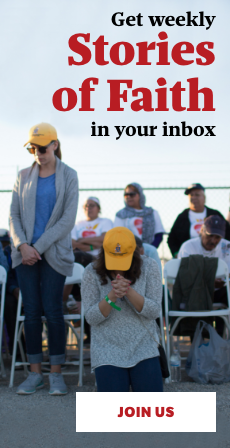At this beginning of the new year, it is good to take a moment to recall the stories that shaped people’s lives over the past year.
In particular, I am mindful of Hurricane Michael in Florida; Hurricane Florence in the Carolinas; Cyclone Gita in American Samoa; Typhoon Yutu in the Mariana Islands and Typhoon Mangkhut in Guam.
Moreover, the hurricanes which hit Texas, Puerto Rico, and the U.S. Virgin Islands in late 2017 have left many in those regions with a long road to recovery, which takes years and millions of dollars.
And in a society whose attention span is overwhelmed daily—if not hourly—stories of the difficulty of recovery will often take a back seat to those in the most recent news cycle.
Among the 87 U.S. dioceses we support are many in areas affected by hurricanes, earthquakes, or fires. Bishop Curtis Guillory, whose diocese of Beaumont, Texas, was pounded by Hurricane Harvey in late 2017, put it well. He noted that while there can be a significant outpouring of concern in the immediate aftermath of a disaster, the greater challenge may well be the long-term recovery of buildings and infrastructure.
It is that long-term recovery which Catholic Extension Society seeks to support with its commitment to partner with dioceses. To use one example, Catholic Extension Society recently gave a matching grant to St. Peter the Apostle Church in Pascagoula, Mississippi, as the latest installment of its ongoing support for the church which was impacted by Hurricane Katrina back in 2005. Katrina remains one of the most devastating hurricanes in U.S. history, both in number of lives lost and in total cost, but to many it is a distant memory.
Catholic Extension Society, rooted in a theology of solidarity with those on the margins, will continue to ease the burdens wrought by this and other disasters.
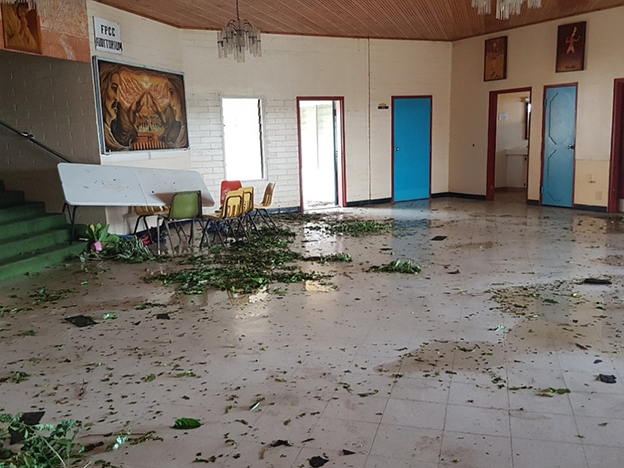
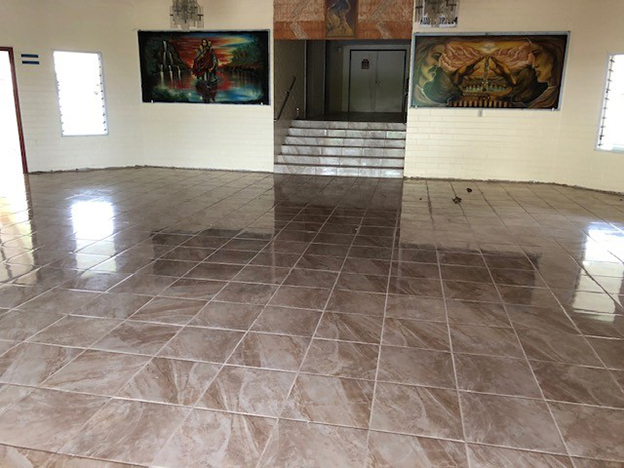
Nowhere is the present challenge of recovery more acute than in parts of the United States separated by ocean, making both immediate and long-term recovery difficult. For example, in the diocese of Mayagüez, Puerto Rico, the Church gave out $425,000 in relief following Hurricane María, supporting immediate needs for food, water, power, clothing, and health care. The Church was for many residents the only immediate source of help, and even now months later it remains a lifeline for residents who remain off the grid and must be reached by person-to-person contact. Many individuals and parishes have responded generously to Catholic Extension Society’s Patrons of Puerto Rico program to support the Church’s ongoing efforts there, and as a consequence Catholic Extension Society has offered hundreds of thousands of dollars to support all six Puerto Rican dioceses.
Similarly, in American Samoa, the Church supported hundreds of people in immediate need following Cyclone Gita last February, offering emergency vouchers to grocery and hardware stores. Catholic Extension Society has sent over $200,000 to American Samoa to support both emergency and long-term relief efforts.
In the Mariana Islands, the devastation is severe. Bishop Ryan Jimenez, returning from the island of Tinian after Typhoon Yutu hit in October, shared photos that show the total loss of the church and other facilities. He reports that for now, the congregation will use whatever public facilities are available until a new church can be built.
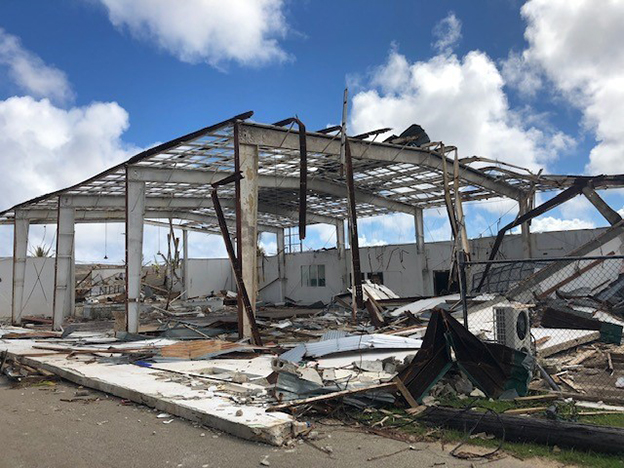
Also in October was Hurricane Michael, which hit the gulf coast of Florida. Bishop William Wack of the Diocese of Pensacola-Tallahassee observed that in times of stress and difficulty, like those following the onslaught of storms, many can feel that the challenge of rebuilding is overwhelming and isolating. The role of the Church, he says, is to remind people that they are never alone. One good example was the parish of Saint Dominic in Panama City, which itself sustained considerable damage and yet which provided thousands of people with food and water in the storm’s aftermath. As much as material needs are in short supply following a storm, perhaps even more desperate is the need for hope. And what we’ve seen in these many recent examples are communities that are fundamentally oriented toward hope. Father Michael Nixon, the pastor of Saint Dominic, expressed it well: it is a joy and a blessing to be able to share hope, rooted in the faith that God’s love can be shared even in the midst of tragedies.
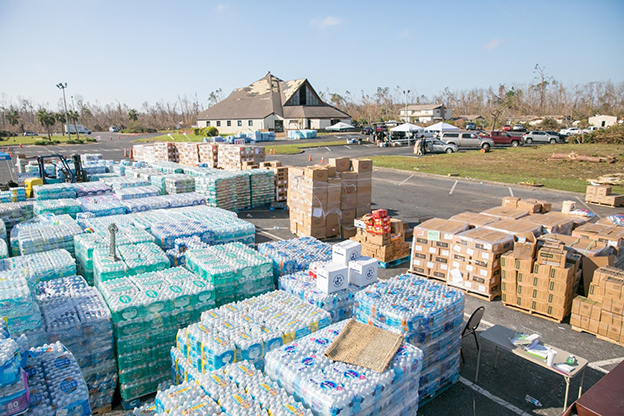
People for whom the practice of faith remains rather abstract can perhaps lose sight of the way that shared practices—like liturgy, devotional practices, or works of mercy—can knit a community together, even across many miles. What we encounter among communities affected by tragedy is often, paradoxically, the birth of new hope. Strangers reach out to offer financial support and prayers. Parishes in one part of the country partner with parishes in another to work with them in times of need. Common barriers of geography or even language fall away, and what remains is the shared faith that God brings beauty out of tragedy.
Tim Muldoon, Ph.D., is the director of mission education at Catholic Extension Society.
